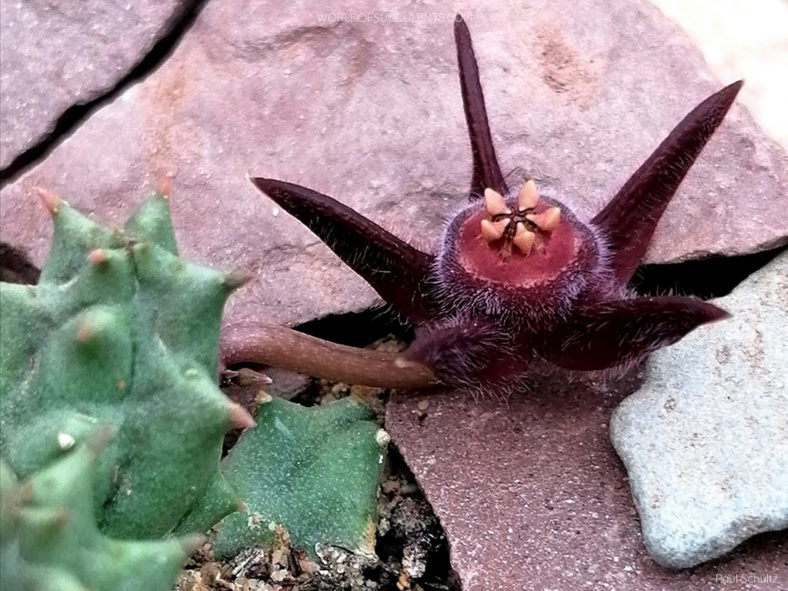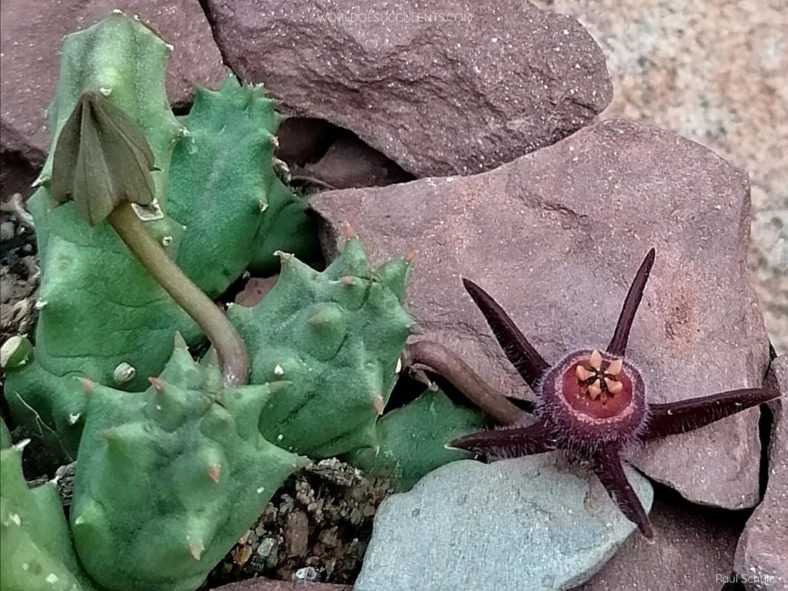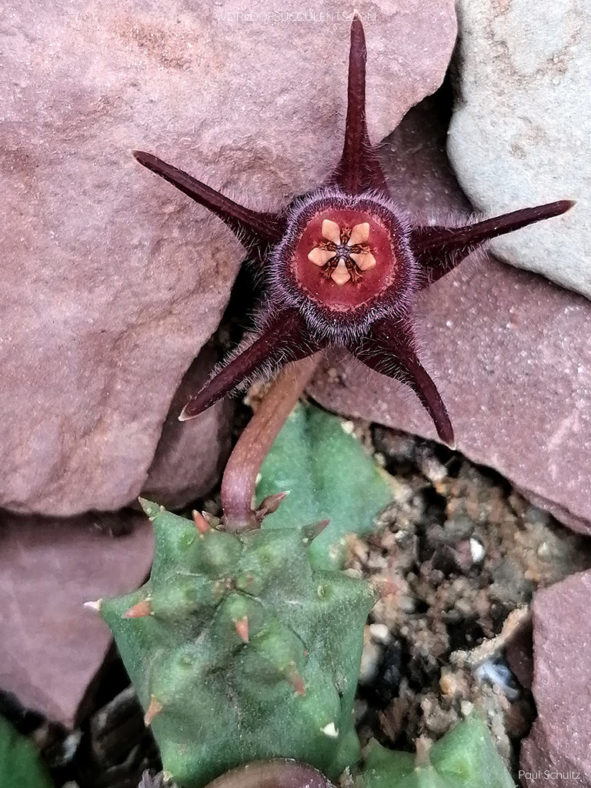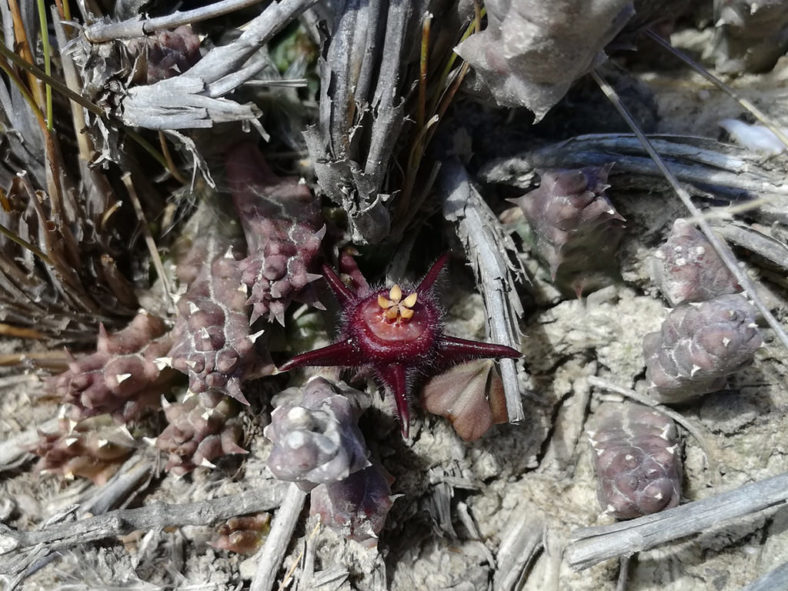Scientific Name
Duvalia caespitosa subsp. vestita (Meve) Bruyns
Synonym(s)
Ceropegia caespitosa subsp. vestita, Duvalia vestita
Scientific Classification
Family: Apocynaceae
Subfamily: Asclepiadoideae
Tribe: Ceropegieae
Subtribe: Stapeliinae
Genus: Duvalia
Etymology
The varietal epithet "vestita" (pronounced "VES-tee-tuh") means "covered, clothed, clad" and refers to the hairy corolla of the flowers.
Origin
The native range of Duvalia caespitosa subsp. vestita is in the far south of the Duvalia caespitosa range, mainly in the western Overberg region, south of the Langeberg mountains in the Western Cape province of South Africa.
Description
Duvalia caespitosa subsp. vestita, also known as Duvalia vestita, is a small, much-branched succulent with fleshy, leafless, dull green stems with 4 to 5 angles lined with conical tubercles. The stems grow along the ground, forming a low clump or a compact mat. They can reach up to 5.2 inches (13 cm) long and up to 0.9 inches (2.2 cm) thick. The tubercles have a short, sharply pointed tip.
The flowers are star-shaped, dark red, almost black, noticeably hairy, and appear in fall held on a short stalk from the lower part of the stems. The corolla can reach up to 1.4 inches (3.5 cm) in diameter and has five narrow lobes. The annulus is usually a dark red-brown. The central corona disc is yellow to reddish-brown, measuring up to 0.3 inches (0.7 cm) in diameter. The seed pods are paired follicles that resemble paired horns and appear up to a year after flowering. The follicles can grow up to 6.8 inches (17 cm) long.

How to Grow and Care for Duvalia caespitosa subsp. vestita
Light: D. caespitosa subsp. vestita grows best in full sun or partial shade. It will benefit from light shade during the hottest summer days. Indoors, place the plant near the brightest window in your home. It will stretch if it does not have enough sunlight. Avoid abruptly moving plants adapted to lower light levels to full sun to prevent sunburn.
Soil: You can use a commercial potting soil mix for succulents or prepare your own with 50 to 70 % mineral grit, such as coarse sand, pumice, or perlite.
Temperature: This plant thrives in warm outdoor environments with low to moderate humidity. It does not like winter cold and should remain fairly dry and warm during its winter dormancy. D. caespitosa subsp. vestita can withstand temperatures as low as 40 °F (4.4 °C). USDA Plant Hardiness Zones 11a to 11b, 40 to 50 °F (4.4 to 10 °C).
Watering: D. caespitosa subsp. vestita has typical watering needs for a succulent. Water your plant thoroughly during the growing season, from spring to fall, and allow the soil to dry between waterings. The plant goes dormant in winter and needs almost no water, about once a month.
Fertilizing: Fertilization is a good idea to keep your plant healthy and thriving. Feed with water-soluble fertilizer diluted to half the recommended strength only when the plant is actively growing.
Repotting: Repot your plant in spring just before the growing season. D. caespitosa subsp. vestita has shallow roots and does not require too much soil to grow. Pick a container with drainage holes.
Propagation: The best way to propagate this succulent is by stem cuttings. Take cuttings during the growing season to ensure good rooting. D. caespitosa subsp. vestita is also easy to grow from seeds. Sow the seeds in spring.
Learn more at How to Grow and Care for Stapeliads.
Toxicity of Duvalia caespitosa subsp. vestita
D. caespitosa subsp. vestita has no toxic effects reported. It is safe around pets and humans.
Links
- Back to genus Duvalia
- Succupedia: Browse succulents by Scientific Name, Common Name, Genus, Family, USDA Hardiness Zone, Origin, or cacti by Genus
Photo Gallery
Click on a photo to see a larger version.


